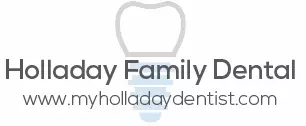
07 Jan 2016 5 Habits of Happy and Healthy Teeth
Being covered by two dental insurance plans means that you are fortunate enough to have what is known as dual coverage.
This does not mean that your coverage is doubled; it simply means that your dentist insurance providers will work together to coordinate your benefits
You will likely receive lower out-of-pocket expenses pertaining to your dental care – a huge plus. When you find the right dentist in Holladay, UT, they will help you understand your options better.
How do you Have Two Insurance Plans?
You may be wondering how it is possible for you to have two insurance plans. Simply put, you may have:
- Coverage from your employer
- Coverage from your spouse’s dentist insurance plan
- A retirement plan
- Medicare or Medicaid benefits
- Multiple jobs, therefore you could have two plans from both employers
Your children will also receive dual coverage if you have two insurance plans. To learn how much the plans cost, be sure to go over all dental insurance information and call your carriers directly.
Can you Choose Between the Two?
One dental plan is known as the primary carrier, and the other is referred to as the secondary carrier. The latter may have better benefits, but industry standards generally consider the dental plan through your employer the primary insurance carrier. The plan that you have through your spouse or retirement plan is considered the secondary carrier. If you have dental insurance through two different employers, the insurer that you have been with the longest will be considered your primary carrier.
When it pertains to your children, the birthday rule is typically used to determine which carrier will be primary or secondary. The parent with the earliest birthday month and date – excluding the year – will provide primary coverage for the child.
How are Benefits Coordinated?
When you have a dental procedure done with us, we will send a claim to your primary insurance provider to receive reimbursement. The claim will be paid based off of your employer’s benefit schedule. If there is a service or amount that your primary insurance provider does not pay, the secondary carrier will cover it. This means that if your primary carrier pays 70 percent of your services, your secondary carrier will cover the other 30 percent, and you pay nothing. In these instances, having two insurance plans come in handy, but there are exceptions.
Non-Duplication of Benefits
Keep in mind that your secondary provider will only pay when the primary carrier does not pay the full allowed percentage. This means that if your primary carrier is responsible for paying 80 percent of your dental services, the secondary will not pay anything beyond that 80 percent; you will generally be responsible for the other 20 percent.
Misconceptions
While it would be wonderful to receive four cleanings per year, dental insurance does not work that way, even if you have dual coverage. Therefore, if both of your dental insurance plans allow two cleanings per year, you are only entitled to two cleanings, not four. You cannot duplicate your benefits.
Do not agree to any dental procedures and assume that your primary or secondary carriers will pay; there are waiting periods, policies, and other important dental insurance information that you should learn more about before making a decision.
Contact Us Now!
At Holladay Family Dental, we offer a variety of services that you and your family could choose from. You can view our services to determine if your primary and secondary insurance plans will cover the cost of the procedures, and what out-of-pockets costs you will need to contribute to your beautiful smile. We will be glad to help you go over your financial options. Call us today at xxx-xxx-xxxx to schedule a consult and for more information!

